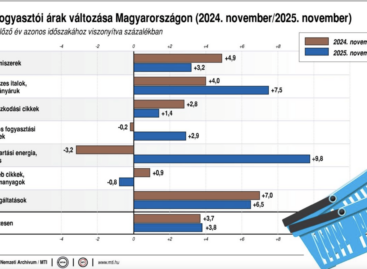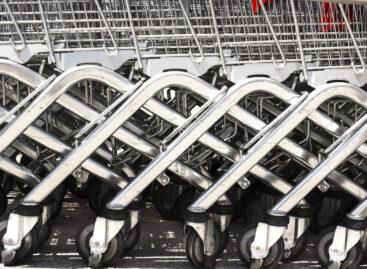We can be cautiously optimistic
Dr Ákos Kozák, co-founder of the Equilibrium Institute gave a presentation at this year’s Business Day, titled “The Promised Land: a report on the Hungarian economy”.
This article is available for reading in Trade magazin 2024/11

Dr. Ákos Kozák
co-founder
Equilibrium Institute
In recent decades Hungary’s economic development has been characterised by smaller and bigger setbacks. A typical problem is that Hungarian SMEs are lagging far behind in productivity, with a performance of only 60% compared to large companies. The situation is particularly bad in the food industry, where the productivity SMEs is only 32%. This rate is way below the EU average and closing the productivity gap between the two segments is a 15-20 year challenge for the Hungarian economy.
GDP on a rollercoaster ride
The German economy – to which Hungary is the most exposed – is forecast to be the only major economy not to grow in 2024, although it isn’t in a crisis in the sense that it used to be in 2008. The main reason for stagnation is the German economy’s decoupling from the Chinese market. Hungary is heavily dependent on the German economy, so Germany’s stagnation directly influences the domestic economic potential. On a yearly basis Hungary’s GDP growth shows a relatively favourable picture and ranks in the first third in an international comparison. However, on a quarterly basis GDP data are less favourable, with a significant decline in economic performance, pointing to a negative trend. The evolution of the Hungarian GDP is characterised by a rollercoaster-like movement. In 2023 the GDP took a dive; the net export-import ratio has improved, but this is largely owing to a weakening of domestic demand, which has led to a decline on the import side.
Domino effect due to underconsumption
When will household consumption bounce back? The GDP growth in the past few quarters hasn’t contributed to this to the extent that it did in the second half of 2010. This phenomenon is having a domino effect in other parts of the economy, with investment falling, dragging down industrial and export performance. Although real wage growth is trending positively, the confidence deficit is causing households to underspend, which is holding back the economy. Industrial production is also struggling and investment was down 17% last year, plus it is expected to fall by a further 10% this year. As regards the level of investment as a proportion of the GDP, it has dropped from 28% to 22% in recent years.
Forecast: we can be cautiously optimistic
Another major concern is the trend in retail sales, which were down by a third compared to the 2015 base. Although real wages are rising by all indicators, households aren’t spending this extra income. Surprisingly for many, the Hungarian household savings rate is one of the highest in Europe at 20%, showing that the population is saving up rather than spending its income. The consumer confidence index remains lower than in other EU countries. However, the inflation outlook seems to be stabilising, with inflation expected to reach 4.3% in 2024 and fall to 3.7% in 2025, according to the Equilibrium Institute. Domestic demand could improve next year, which could contribute to economic growth. GDP growth projections have been revised upwards, to 1.9% in 2024 and 3-3.5% in 2025. Investment is weak this year, but an upturn is likely in 2025, with a resumption of household consumption a key driver of economic growth. In 2025 this year’s 10-11% contraction may be followed by an 8-9% hike in investment, which could be supported by EU funding. //
Related news
Price isn’t enough, promotions and re(in)novation are lifting the plane
🎧 Hallgasd a cikket: Lejátszás Szünet Folytatás Leállítás Nyelv: Auto…
Read more >KSH: in November, consumer prices exceeded the values of the same month of the previous year by an average of 3.8 percent
🎧 Hallgasd a cikket: Lejátszás Szünet Folytatás Leállítás Nyelv: Auto…
Read more >21st European Commerce Day: the market and politics sitting at the same table
🎧 Hallgasd a cikket: Lejátszás Szünet Folytatás Leállítás Nyelv: Auto…
Read more >Related news
The HORECA sector joins forces with Alimentaria+Hostelco to mark the future of hospitality
🎧 Hallgasd a cikket: Lejátszás Szünet Folytatás Leállítás Nyelv: Auto…
Read more >Challenges of the retail sector: retail has become more crisis-resistant
🎧 Hallgasd a cikket: Lejátszás Szünet Folytatás Leállítás Nyelv: Auto…
Read more >How to avoid the hassles of online shopping?
🎧 Hallgasd a cikket: Lejátszás Szünet Folytatás Leállítás Nyelv: Auto…
Read more >






